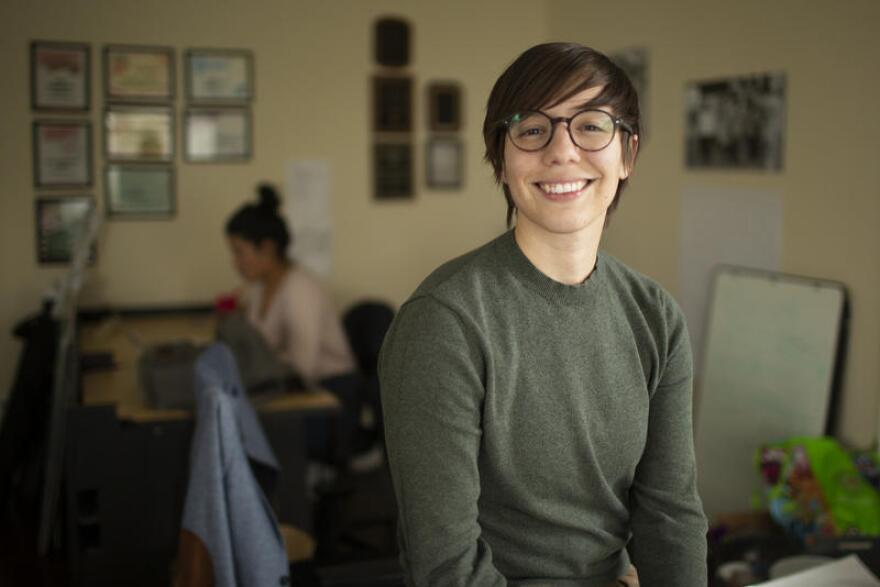The next presidential election may be more than a year away, but groups working to get young people in the state civically engaged have been beefing up their operations for a while now.
One of those groups, MOVE Texas, has experienced a massive growth in staff, organizers and investments.
“Our budget has increased something near 900% in the past two years,” said Charlie Bonner, MOVE’s communications manager. “We are really seeing people start to invest in Texas in a way they never have before.”
Texas has one of the youngest populations in the country. In fact, only Utah, Alaska and the District of Columbia have younger populations – and not by much. It’s projected that by 2022, 1 in 3 voters in Texas will be under 30.
“There is a lot of potential there,” said Victoria DeFrancesco Soto, a lecturer at UT Austin’s LBJ School of Public Affairs. “Young folks don’t tend to register, don’t tend to vote at the same rates that older folks do.”
A Historically Bad Investment
Low turnout in years past has hampered big investments into young voters until somewhat recently.
Texas has one of the worst voter participation rates overall – and youth voter turnout is particularly dire. In 2014, for example, just 8% of Texas youth turned out to vote.

Rae Martinez, who works for a youth voter engagement effort called Texas Rising, said investing in young voters in Texas has largely fallen to nonprofits because campaigns see it as a bad investment.
“Sometimes when campaigns come along the investment in young people isn’t as strong as maybe in organizations who primarily serve young people,” Martinez said. “Because campaigns have felt that young people wouldn’t turn out for them.”
But things have started to change.
Triple The Turnout
During the last election, turnout among Texas voters under 30 tripled compared to the previous midterm election.
“2018 reversed the trend that we’d been seeing in terms of decline in voter turnout among youth and among Latinos,” DeFrancesco Soto said.
That change is also part of the reason the state experienced one of the closest statewide elections in decades, when Democratic Congressman Beto O’Rourke lost to incumbent Sen. Ted Cruz by less than 3 percentage points.
Martinez said that close election made it easier to raise money for efforts aimed at getting even more young people and people of color to vote.
Massive Investments
“The increase in youth voter participation in 2018 – donors are excited about that,” Martinez said. “They want to see that continue to grow.”
And Texas Rising plans to register thousands of new young voters ahead of 2020.
Bonner said between now and that presidential election, MOVE Texas alone plans to register 100,000 young voters.
“It’s a lot,” he said. “So we are massively scaling to be able to meet that and expanding into new cities, hiring new organizers and training as many young people as possible to be volunteer deputy registrars.”
It’s not just big investments in organizing that is slowly making Texas’ electorate younger. Martinez said young voters are also responding to policies and decisions being made that many of them they don’t agree with.
“There’s a lot of bad stuff that’s happening right now,” Martinez said. “I think that people on campus that we are encountering want to do something. They want to have a say in the political process.”
Looking To 2020
The combination of all this is why DeFrancesco Soto said she thinks youth voter turnout could be even bigger next year.
“I think we are going to see that trend continue – and then be popped up a little bit more by the sheer fact that you always have higher turnout, higher engagement in presidential year elections,” she said.
And for organizers who have been doing this work for a while, this is about more than 2020. Bonner said this is also about investing in the state’s future and making sure its electorate more accurately reflects its population.
“If we get [young] folks to vote in two to three elections, they become lifelong voters,” he said. “And so this election, after that massive growth in 2018, it is going to be critical to creating that habit for young voters.”







